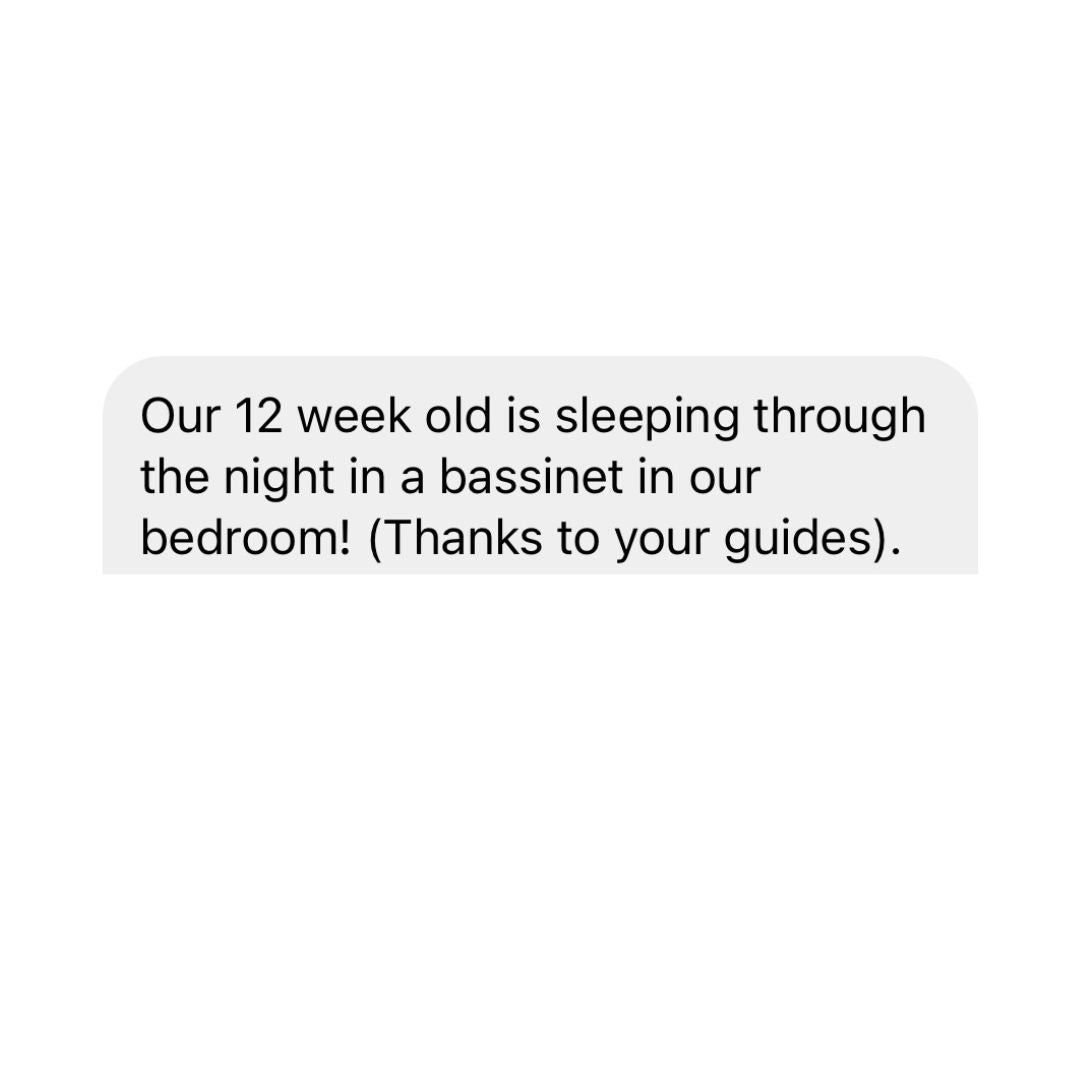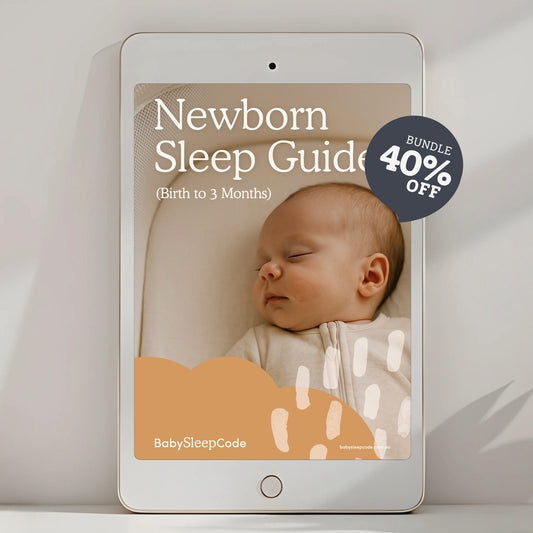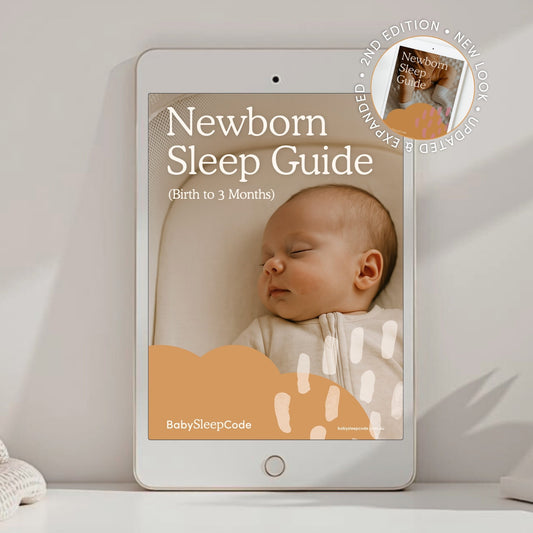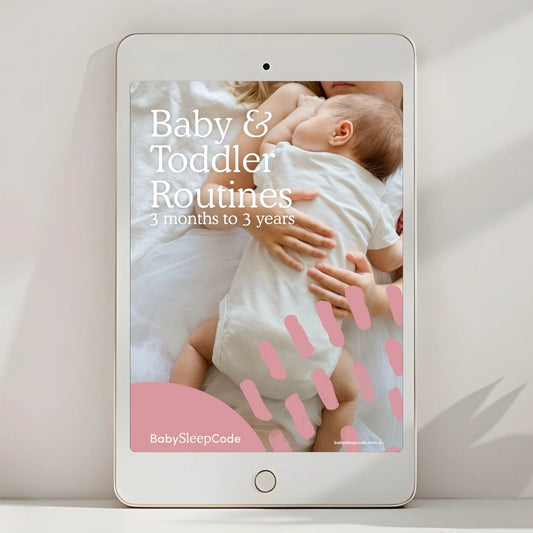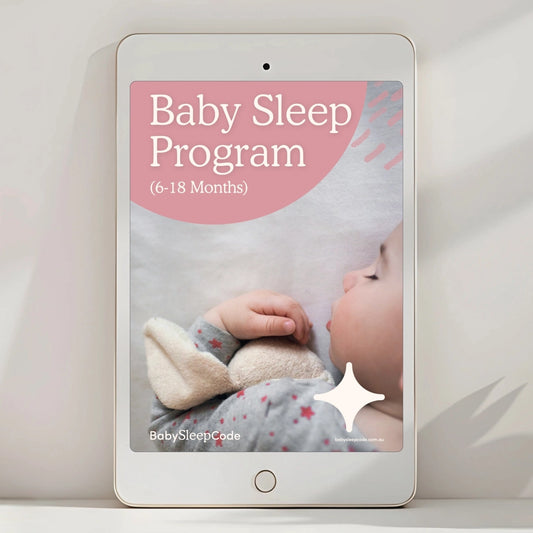As a first-time mum, I remember lying awake just to check if my baby was still breathing. I knew SIDS was something to worry about, but what no one explained clearly was why certain sleep situations were more dangerous than others. I thought safe sleep was just about ticking a few boxes. Now I know it's about protecting our babies from very real and very preventable risks.
Understanding SIDS and SUID — and Why Safe Sleep Matters
When we talk about safe sleep, we’re really talking about preventing SUID — Sudden Unexpected Infant Death. This is an umbrella term that includes:
-
SIDS (Sudden Infant Death Syndrome) – a sudden death during sleep that remains unexplained after investigation.
-
Accidental suffocation and strangulation in bed (ASSB) – which includes things like positional asphyxiation or rebreathing.
-
Other sleep-related deaths – where unsafe sleep conditions were clearly involved.
SIDS is tragic, and while it’s not yet 100% preventable, the good news is that we can greatly reduce the risk by following consistent, evidence-based sleep practices.
But here’s something every parent should know: all other causes of sleep-related death — like suffocation, overheating, or entrapment — are 100% preventable. And that’s why education is so important.
This isn’t about scaring you. It’s about giving you the clarity and confidence to protect your baby using strategies backed by decades of research. Because once you understand the “why” behind each guideline, safe sleep doesn’t just feel like a checklist it becomes something you feel sure about.
What does 'safe sleep practices' actually mean for a newborn?
According to the American Academy of Pediatrics, Red Nose Australia, and The Lullaby Trust, the main safe sleep recommendations include:
- Always placing your baby on their back to sleep (not on their tummy or side).
- Using a firm, flat mattress that fits snugly in a safety-approved bassinet or cot.
- Keep baby’s face and head uncovered and sleep surface clear (no hats for sleep, no pillows, bumpers, loose blankets, or toys)
- Having baby sleep in a parents room for at least the first 6 months.
- Keep baby smoke free, before and after birth.
- Breastfeeding, if possible, which has been shown to boost immune function.
These recommendations are based on the result of decades of research into how babies sleep and why certain conditions lead to tragedy. Safe sleep saves lives.
In Australia, bassinets aren’t regulated like cots are, so it’s important to research your choice, read our blog Choosing a bassinet safe for sleep.
Why are newborns so vulnerable to unsafe sleep environments?
Newborns don’t have the muscle strength to reposition themselves if their airway becomes blocked. Their heads are proportionally large and heavy, and their reflexes are still developing. If their chin drops to their chest or their face presses into a soft surface, they can’t always lift or turn their head to clear their airway. This can lead to something called positional asphyxiation, or carbon dioxide rebreathing.
Their bodies also don’t regulate temperature well, making them more prone to overheating especially when wearing a hat, or surrounded by soft, insulating bedding.
And while you might assume babies will instinctively cry or move if something feels wrong, that’s not always the case. One of the most heartbreaking truths about SUID is that many babies don’t show any signs of struggle. They don’t always rouse or alert anyone when their breathing becomes compromised, which is why prevention and a safe sleep space matter so much.
Why does a baby have to sleep on their back?
Back sleeping has been one of the most effective public health recommendations for reducing SIDS. When placed on their back, a baby’s airway remains open and less likely to be blocked. In contrast, babies sleeping on their stomach or side are at higher risk of suffocation. Their faces may press into the mattress or turn into soft bedding, and they may not have the strength or reflex to move to a safer position.
Tummy time is still very important as it strengthens their core, back and neck muscles just save it for when they’re awake and being closely supervised.
Is it safe for my baby to sleep on their back if they have reflux?
Yes — and in fact, it’s the recommended position. One of the most common fears among new parents is that their baby will choke if they spit up while lying flat on their back. But research shows that back sleeping is actually the safest position, even for babies with reflux.
When your baby is on their back, the airway (trachea) sits above the oesophagus. If they spit up, gravity helps keep milk in the oesophagus and away from the airway. In contrast, when a baby is on their tummy or side, milk can more easily pool around the airway and increase the risk of aspiration.
Babies also have strong protective reflexes that help protect their airway like coughing, swallowing, or gagging even while asleep. Back sleeping is still the safest choice, even for babies who have reflux.
Also important to know: tilting the cot or elevating the mattress is not recommended and studies have shown doesn’t help with reflux.
Are baby products like sleep positioners, bouncers, and loungers safe for sleep?
Despite being sold in stores and heavily marketed online, many baby products are not safe for sleep, even if they’re labelled as "safe for sleep". Items like sleep positioners, wedges, baby nests, loungers, bouncers, and rockers pose a significant risk and are not recommended by Red Nose, the AAP, or The Lullaby Trust.
These devices often place babies in angled or slouched positions that can cause their head to fall forward, restricting their airway. Soft or contoured sides can increase the risk of suffocation and rebreathing of carbon dioxide. Some of these products have been linked to multiple infant deaths and are banned in other countries, yet they remain on shelves here in Australia due to a lack of mandatory safety standards.
When in doubt, always go back to the basics: a flat surface, firm mattress, on their back, with nothing but a fitted sheet.
Read more on our blog 7 products not safe for sleep.
Why are adult beds and soft surfaces not safe for newborns?
Even if you’re not bedsharing, placing a newborn on an adult mattress whether it’s your bed, a couch, or a makeshift floor mattress increases risk. Adult mattresses are too soft. They can indent around your baby's body and head, increasing the risk of overheating or rebreathing carbon dioxide. Babies can also roll (or slump) into unsafe positions and become trapped.
Cosleeping, Room Sharing, and Bedsharing: What's the Difference and What’s Safe?
The terms “cosleeping” and “bedsharing” are often used interchangeably, but they’re not the same thing. Cosleeping simply means sleeping in close proximity to your baby and this can be achieved safely through room sharing.
Room sharing means your baby sleeps in a cot or bassinet in the same room as you, but on a separate sleep surface. This setup allows you to respond quickly to your baby, regulate their environment, and even support breastfeeding — all the benefits of proximity, without the increased risk.
This is why Red Nose, the AAP, and The Lullaby Trust all recommend room sharing for at least the first six months. It’s been shown to reduce the risk of SIDS and supports better outcomes for both babies and parents.
Bedsharing, on the other hand, refers to parents and baby sleeping on the same surface. While it may sound nice, it is not considered safe especially in the early months when their systems are most immature. Babies have tragically died from slipping under blankets, becoming wedged, having their breathing compromised or overheating.
Is it safe if my baby falls asleep on my chest?
Holding your baby skin-to-skin can be beautiful and calming and if you’re awake and supervising, it’s a wonderful way to connect. But it still needs to be done safely. Your baby should be upright, their head turned to the side, chin off their chest, and face visible at all times. Think of the same safe positioning guidelines used for babywearing.
If you feel even slightly drowsy, it’s time to move your baby to a safe sleep space. Falling asleep while holding your baby, especially on a couch or recliner, is extremely dangerous. In fact, research shows that babies are 50 times more likely to die from a sleep-related incident when sleeping on a couch with a parent.
I've seen people recommend chest-to-chest cosleeping with a newborn. Is this safe?
There’s a growing trend on social media where people recommend sleeping with a newborn on your chest, especially during the early weeks. While it may look peaceful, this position is not safe for sleep.
Newborns don’t have the muscle control to reposition their heads if their airway becomes compromised. If their chin falls to their chest, or their face turns into your chest or armpit, they can silently stop breathing. This is known as positional asphyxiation.
And while you may feel like you're a light sleeper, adult sleep cycles include periods of slow-wave (deep) sleep, during which our brain significantly reduces its responsiveness to external stimuli. We enter this phase several times per night, and the more sleep-deprived we are, the longer we tend to spend in it. This phase plays an important role in memory and recovery, but it also means that even the most attentive parent may not wake if their baby shifts into an unsafe position.
That’s why relying on instincts or light sleeping isn’t enough we need to create a safe sleep space for our babies every time.
The safest sleep surface for a newborn is still a bassinet or cot next to your bed. You can absolutely enjoy cuddles, contact naps, and closeness — but sleep needs to happen in a space designed to keep them safe
Is bedsharing ever safe?
The evidence shows that bedsharing increases a baby’s risk of sleep-related death — especially in the first few months of life by up to 10 times.
But couches, arm chairs, and sofas are even worse, up to 50 times more dangerous and many exhausted parents find themselves unintentionally falling asleep while holding their baby. That’s why it’s so important to talk openly about risk reduction, rather than pretend bedsharing never happens.
If you are choosing or resorting to bedsharing:
- Always place baby on their back.
- Keep bedding, pillows, and pets away.
- Don’t swaddle; use a safe sleeping bag with arms out.
- Use a firm, flat mattress — never a couch, recliner, or pillow-top bed.
- Ensure baby isn’t between two adults or near older siblings.
- Move the bed away from the wall and on to the floor to avoid entrapment and falls.
The safest sleep space for a newborn is still their own bassinet or cot in your room. But if bedsharing might happen, planning for it is safer than pretending it won’t, read more about reducing risks when bedsharing here.
Is swaddling safe for newborns?
Swaddling can be a great safe and effective way to help newborns sleep more soundly as long as it’s done correctly.
A proper swaddle should:
- Be snug around the arms but loose around the hips to allow natural movement.
- Keep fabric well below the neck and away from the face.
- Always place baby on their back to sleep.
- Never swaddle if bedsharing.
- Never be used once baby shows signs of rolling (usually around 3 months, but it can be earlier).
Are dummies safe during sleep?
Yes, and some studies suggest dummies may lower the risk of SIDS. Red Nose doesn’t include dummy use in its official guidelines because research hasn’t confirmed whether the benefits are causal or simply correlated. But it’s still considered a safe choice.
Just make sure the dummy is the right size, not damaged, and offered without any clips, straps, or tethers. If it falls out during sleep, you don’t need to replace it.
Sleep hacks" you might see online that are actually unsafe
It’s easy to get overwhelmed in the early weeks, especially when well-meaning friends, family, or strangers on social media start offering shortcuts and sleep hacks that seem like a good idea — but aren’t safe.
Things like weighted swaddles, rice-filled gloves designed to mimic a parent’s touch, or rolling up towels to hold a baby in place might feel like harmless tricks, but they can be incredibly risky. These kinds of objects introduce loose or weighted items into the sleep environment, which can increase the risk of suffocation, overheating, or entrapment.
Other unsafe suggestions include placing a baby on their tummy to sleep, having them cuddle a soft toy or pillow, or propping them up with blankets to help them “feel secure.” None of these are recommended, and all of them increase the risk of SIDS and sleep-related accidents.
If it’s not in line with Red Nose, AAP, or Lullaby Trust guidance, it’s best to skip it. Sleep safety isn’t about finding clever workarounds it’s about keeping things simple, clear, and consistent.
If I'm struggling with safe sleep, what can I do?
Safe sleep isn’t always easy. Some babies won’t settle unless they’re in your arms. Some scream the moment they’re placed in the bassinet. And some nights, exhaustion leads to choices you know aren’t safe — not because you don’t care, but because you’re running on empty.
There’s not enough support for parents in this stage. And that’s part of the problem.
If your baby will only nap on you, or you’re stuck in survival mode, there are practical, gentle and safe strategies that can help.
✨ Download our free crib naps guide for tips on helping your baby sleep safely and soundly in their bassinet.
Or for a complete step-by-step plan to guide you through the first three months of sleep grab our Newborn Sleep Guide, trusted by thousands of parents to make safe sleep realistic.









